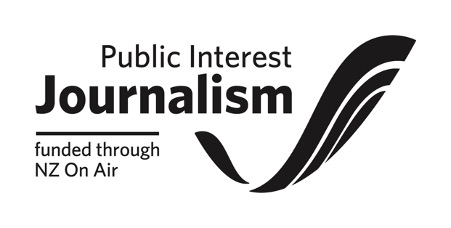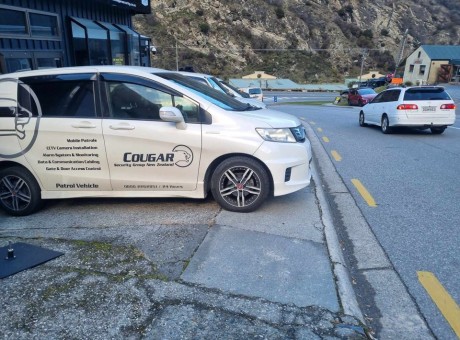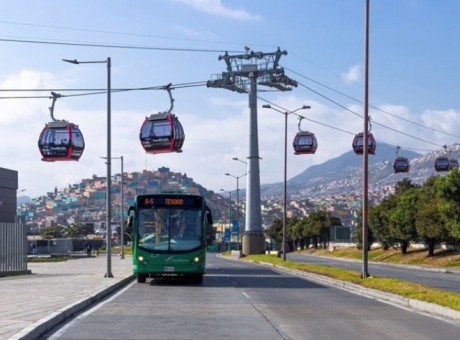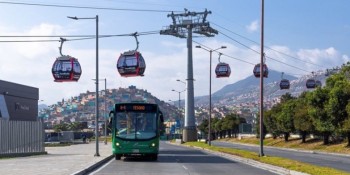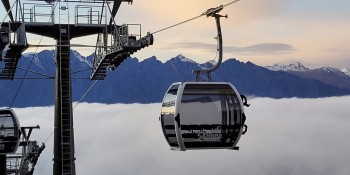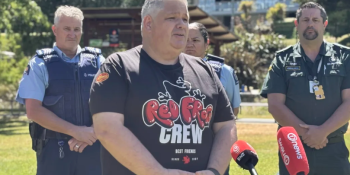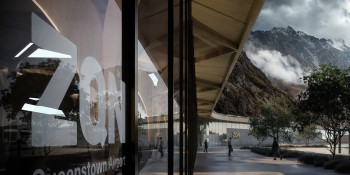Queenstown Airport $350m growth plan - 800,000 more passenger movements
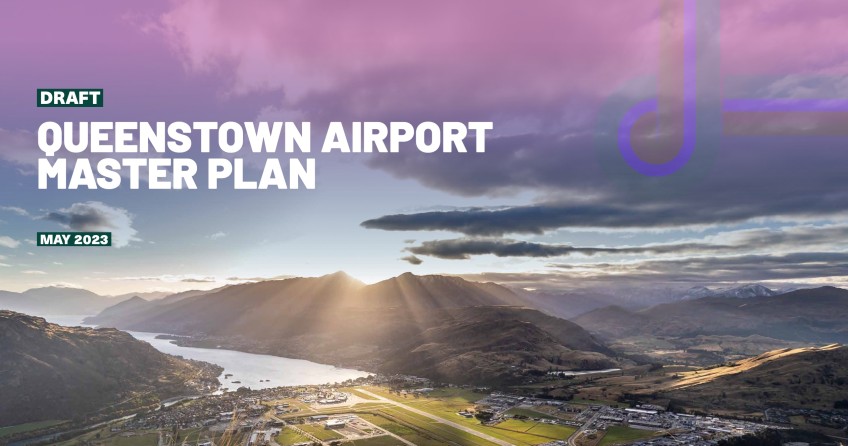
A $350-million infrastructure spend by Queenstown Airport will accommodate 800,000 extra passenger movements a year within 10 years, but according to chief executive Glen Sowry the social, financial and environmental impact is within limits the community can live with.
Mr Sowry says the airport master plan released for public consultation today shows what physical work needs to happen over the coming decade to ensure the transport hub becomes “world-class”, without losing any personality.
“We're not talking about trying to recreate Dubai Airport here in Queenstown. We're very mindful and clear about what this airport can and should be.”
And what he is certain it shouldn’t be, is an airport with air bridges.
“Because we know that one of the things people love and comment on is coming off the aircraft and that ‘wow’ moment of standing on the tarmac and seeing the Remarkables right in front of you, breathing in that mountain air.
“Those types of experiences we want to ensure we preserve.”
'Modest growth'
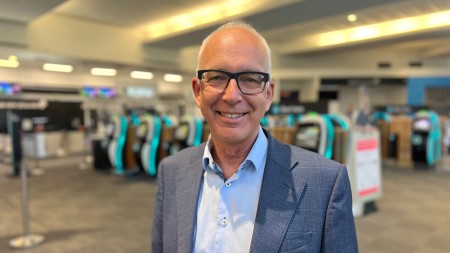
Chief executive Glen Sowry wants to keep Queenstown Airport's personality and make it world-class.
The works schedule is based on accommodating what the airport reckons is “modest growth” – in real figures, 3.2 percent compounded annual growth in passenger numbers, which will equate to 3.2 million passenger movements a year by 2032.
By 2025, it is projecting to be back at pre-Covid passenger levels, with steady growth year-on-year after that.
Mr Sowry reckons there isn’t much in the master plan that will come as a surprise to most people – the community was consulted on the airport’s 10-year strategic plan that was released last year.
“So this master plan...is almost like the playbook for how we're physically going to deliver that 10-year strategic plan and beyond,” he says.
The “playbook” proposes a phased series of projects.
“Even if we wanted to, there's not the capacity available in the region for us to just go, ‘Bang, we're gonna do it all in a year or two’.
“And, so, a really busy year, there might be $30 or $40 million of investment. And other years, it might be a bit less.
“Each time we go to initiate a project we will have all of the disciplines you'd expect around the business case, procurement, making sure that we think it's the right time to initiate that next part of the plan.”
The airport’s board will have full oversight and the airport will engage with the council, its major shareholder, through the existing annual Statement of Intent process to “ensure there’s full visibility of what all that looks like” at each step .
Ratepayer sweetener steady
So, with the council set to face double digit rate rises and increased debt levels after some hefty leaky building settlements, is the airport prioritising nice-to-have investment over community dividend payouts?
Mr Sowry says it doesn’t have to be one or the other - he’s going for both.
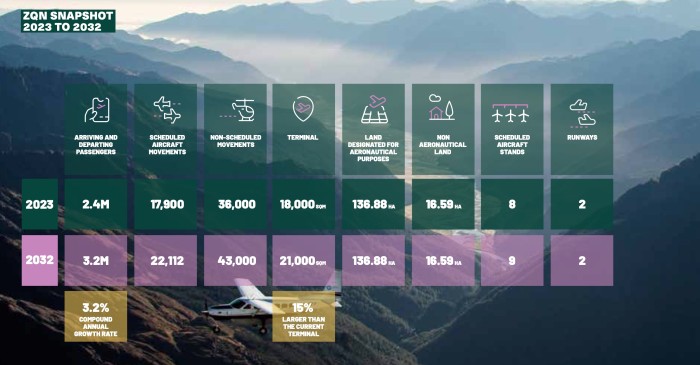
The next decade in numbers for Queenstown Airport (Image: Queenstown Airport draft master plan).
“We’re an incredibly lowly-geared business, so about 15 percent debt to value ratio, and we've been retiring debt pretty quickly this year.
“We have done a lot of modeling, and we’ve had that externally validated, that we can afford this - we can continue to pay QLDC a meaningful dividend throughout this program of investment.”
How does he define meaningful?
“We will pay QLDC at the end of this financial year a record dividend. It probably won’t be quite at that level...but I think it will be stable.”
In the bigger scheme of things, the investment, like the projected passenger growth, is "modest", he reckons.
“To put it into perspective, we're proposing a $350 million investment that contrasts with building a new domestic terminal at Auckland of $3.9 billion, eleven times as much."
He also says the modelling has included planning “for the worst” – a range of scenarios that could see a reduction in demand, like another pandemic or a new regional airport at Tarras.
The number crunching, and there is no surprise here, is commercially sensitive, especially with a prospective competitor eying up an international airport just up the road, and details are not publicly available.
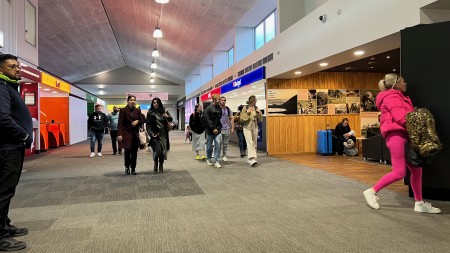
The 10-year, $350-million infrastructure master plan for Queenstown Airport includes increasing the footprint of the terminal building, separating out arrivals and departures.
Changes flagged for an airport 'to be proud of'
The 10-year plan includes extending (think 15 percent larger than it is now) and modernising the airport terminal – to sort congestion issues and improve resiliency in the case of a big quake or other natural disaster.
Also in the plan, an Engineered Materials Arresting Sysytem, or EMAS for short, to enable an aircraft to stop safely in the unlikely event it overshoots the runway.
Mr Sowry likens the $20-million-or-so piece of landing tech to “creme brulee” – there’s a hard crust that cracks to reveal a softer bottom. It is an infrastructure investment he hopes to never see used, but he is confident of its effectiveness to keep a plane intact if it is ever called upon.
If installed it will be an Australasian first, although they are more commonplace in airports in North America and Europe.
The runway as it exists now does meet regulation, he says.
“Queenstown Airport is safe. We work very hard to make it safe as do the airlines and other operators, but it is unique being in an alpine environment and we treat it with respect.”
Also mapped out are areas for future technologies – parking spots for electric planes and space for the delivery of green hydrogen – so the airport is ready to be early adopters and encouragers of more sustainable aviation alternatives.
“We’re endeavouring to be really transparent and upfront about the challenges,” Mr Sowry says.
“We're not claiming to be a carbon zero airport because, ultimately, airports enable aircraft flight, and aircraft flight is where the bulk of the emissions occur.
“For us to try and convince people otherwise would be a foolish exercise. It's eminently obvious to us all.”
However, over the course of the decade he is planning for, Mr Sowry is confident we will start to see some “material progress” in decarbonisation of aviation, starting with shorter journeys.
“So Queenstown, I would argue, is incredibly well placed because we're an exclusively short-haul airport to Australia and domestically. We've been having regular discussion with Air New Zealand to ensure that we partner with them to prove concepts.”
But, the reality is, in the near-future, to fly to Auckland or Wellington, or across the Tasman, will rely on jet fuel - although both Air New Zealand and Qantas are starting to invest in new aircraft that are quieter and burn less fuel, therefore having fewer carbon emissions.
So, the airport will next year offer pricing to airlines to encourage and incentivise these lower emission, quieter aircrafts into Queenstown. It is nutting out the model now, and is a world leader in doing so, Mr Sowry says.
Beyond the decade, the airport is also anticipating a “green link” that will give people the option to travel to and from the airport via a pathway connecting with Frankton Bay and lakeside cycle paths or ferries on Lake Whakatipu.
Airport commits to general aviation
There has been talk that general aviation may be elbowed out by the bigger players, but Mr Sowry says this week he’s provided local helicopter and fixed-wing operators with a heads up on what’s in store, including dedicated new spaces for them at the airport.
“GA (General Aviation) is core to our DNA as a region and as an airport. That's what this airport grew from. Here in Queenstown, it's a key part of the the visitor experience...and it employs a lot of people in the district.”
The plan is to relocate general aviation away from the main residential area of Frankton, with helicopters consolidated north of the runway and fixed-wing aircraft in a new precinct south of the runway.
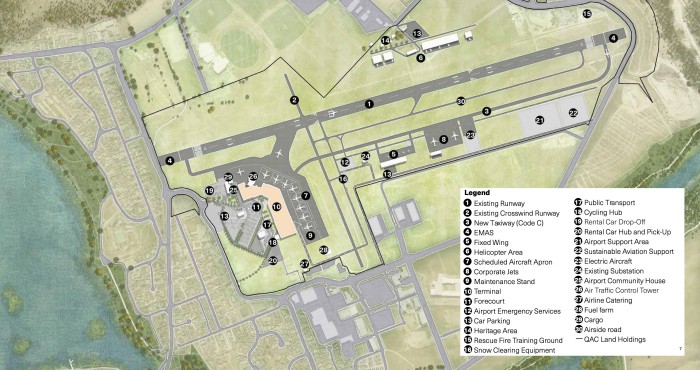
The proposed layout of the airport, with new infrastructure, in 2032 (Image: Queenstown Airport draft master plan).
The right balance
Mr Sowry says with the master plan out for consultation he is anticipating some robust discussion about what success looks like for the airport.
“We know that in this community there's a very broad range of views, particularly around the visitor economy – tourism. There's some members of the community who would like to see tourism numbers stop where they are, or even reduce, and the airport is seen as something of a lightning rod for that debate.
“The fact is that well over half the people that visit this district come by road and not by air. Is somebody going to put a toll gate up at the Roaring Meg? You can’t stop that.”
He says it is about getting the balance right.
“We’re a significant asset majority owned by the community. There's a lot of financial benefit flows from this business when it runs well, but it's also a significant social and economic enabler for people living here - be that their ability to connect with friends and family, to be able to do business while living here..through to enabling the visitor economy.”
Public consultation on the draft master plan is open until June 23 and is being done in consultation with the Queenstown Lakes District Council. More information about the plan and consultation process can be found on Queenstown Airport’s website here.
Pop-up information sessions will also be held at public locations around the Southern Lakes over the next month, and a lunchtime webinar for the public will be held next Wednesday (May 31).
The master plan relates only to Queenstown Airport. While the airport corporation manages the day-to-day operations of Wānaka Airport under a management services agreement, the QLDC, as the owner of Wānaka Airport, will consult with the community on long-term plans for Wānaka.





